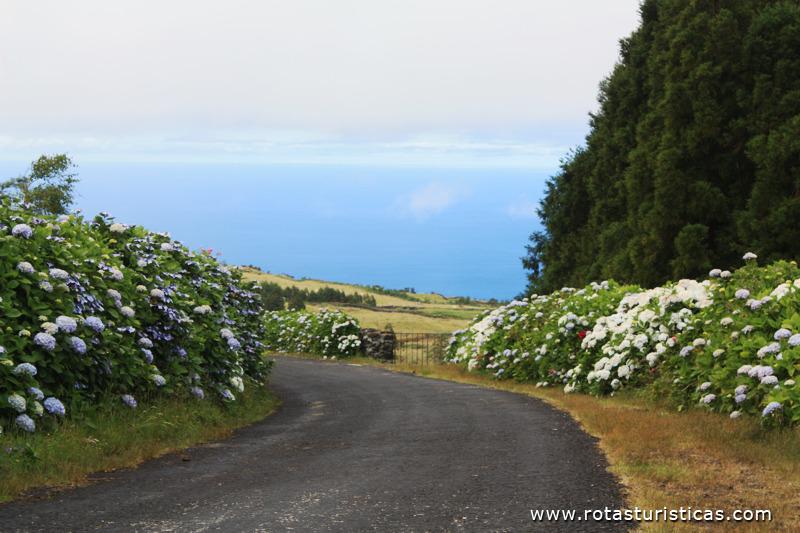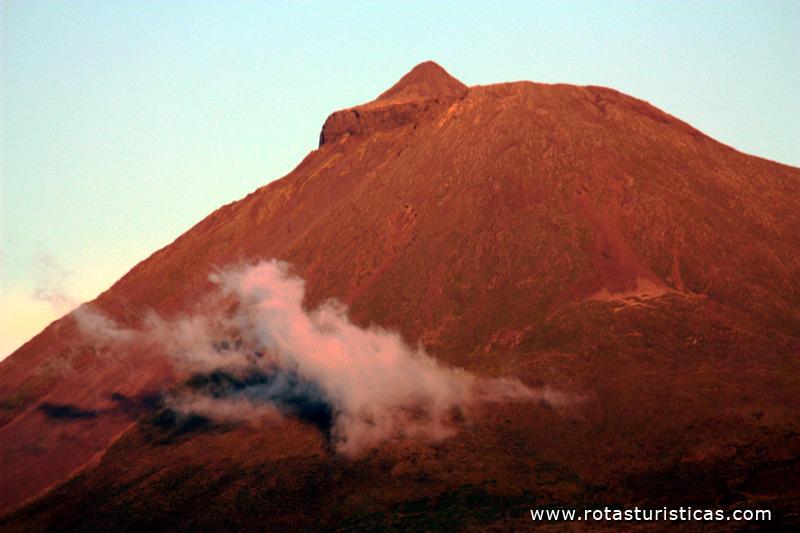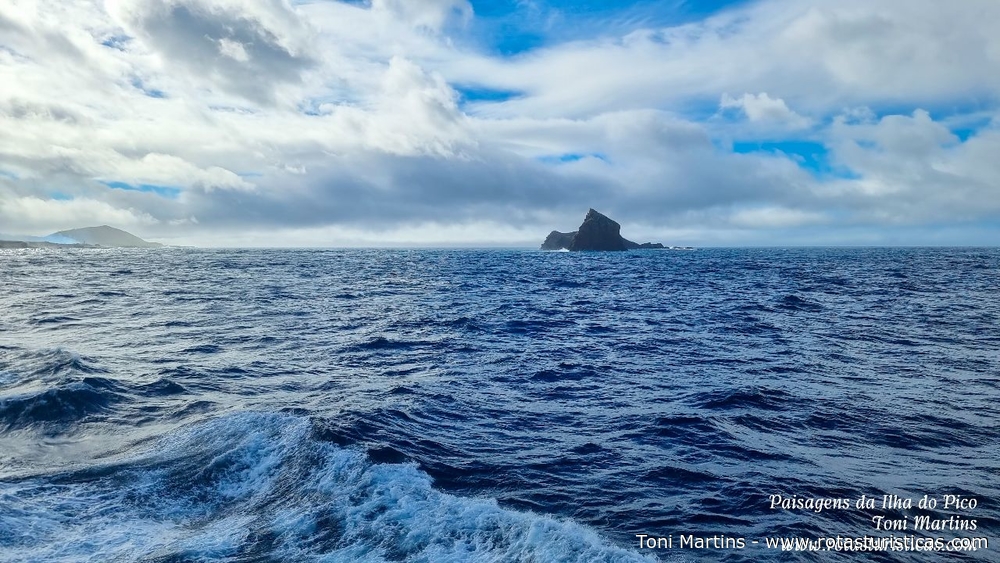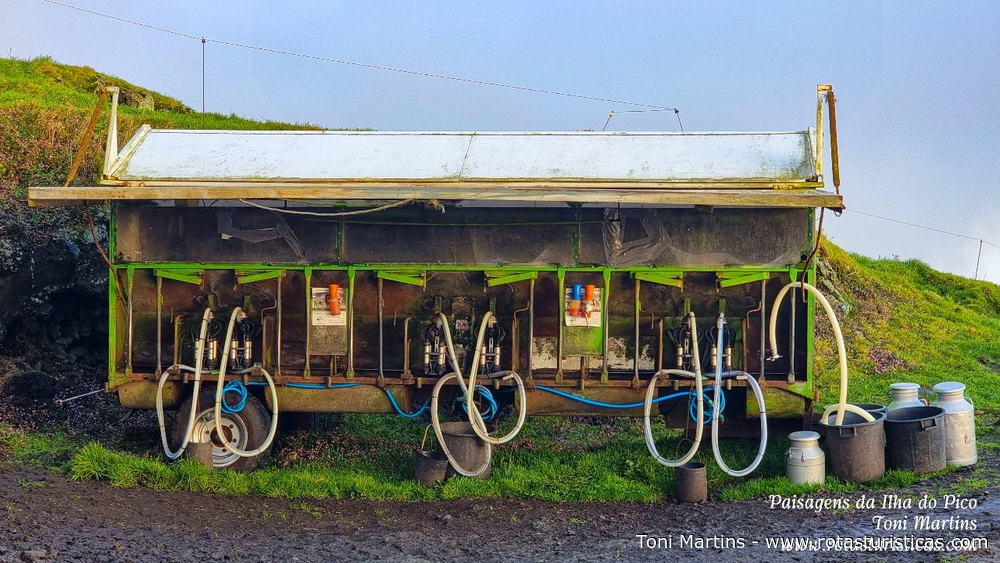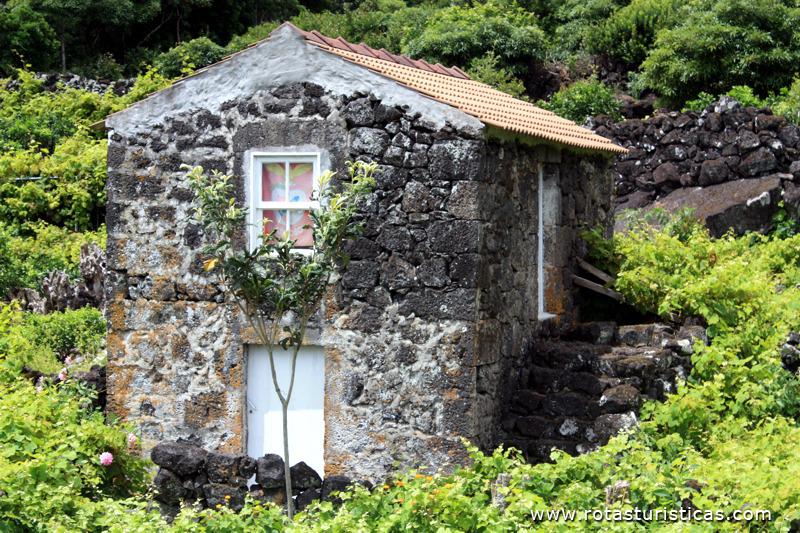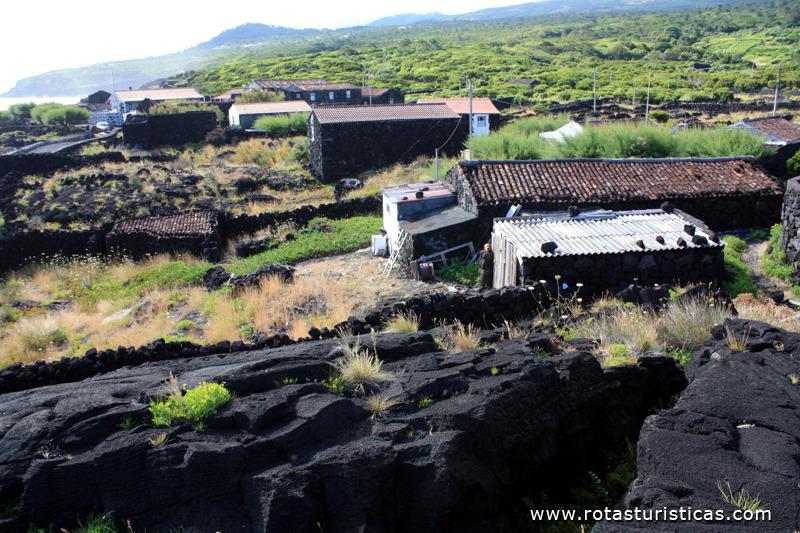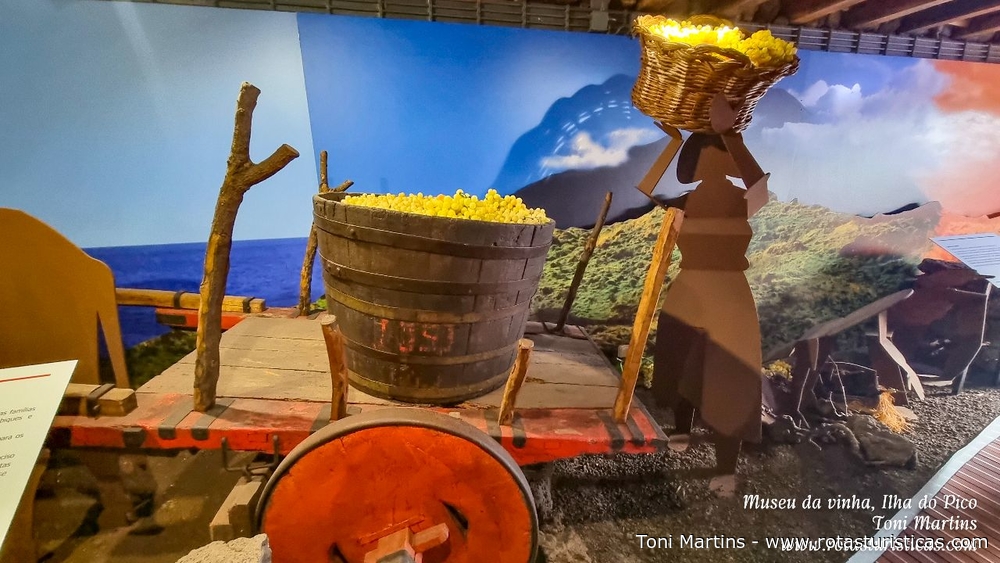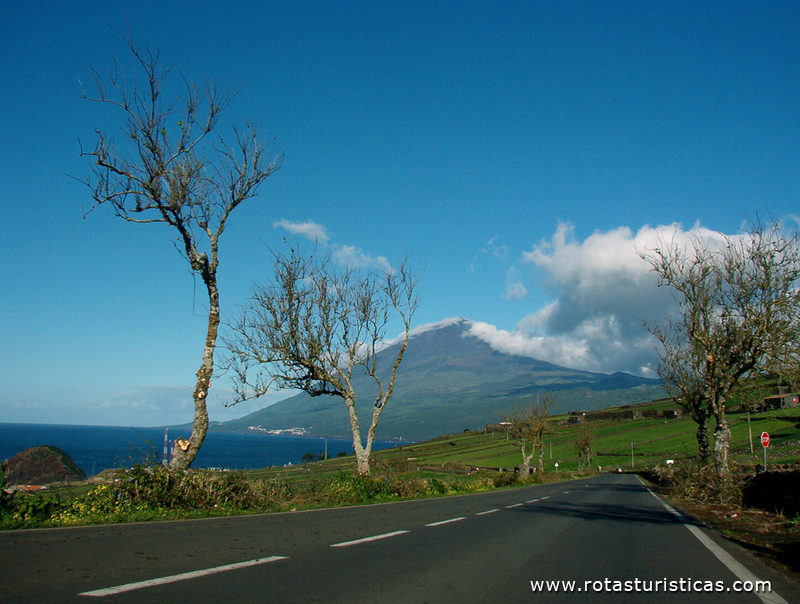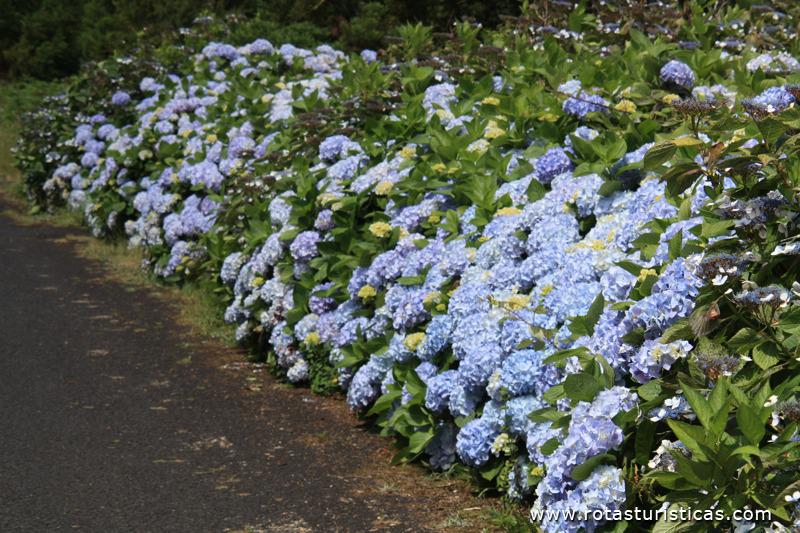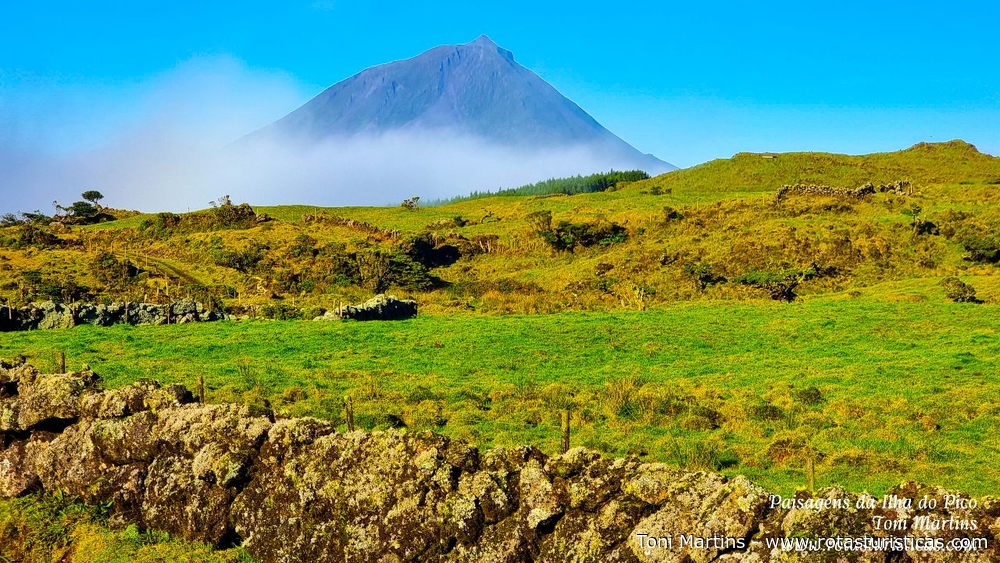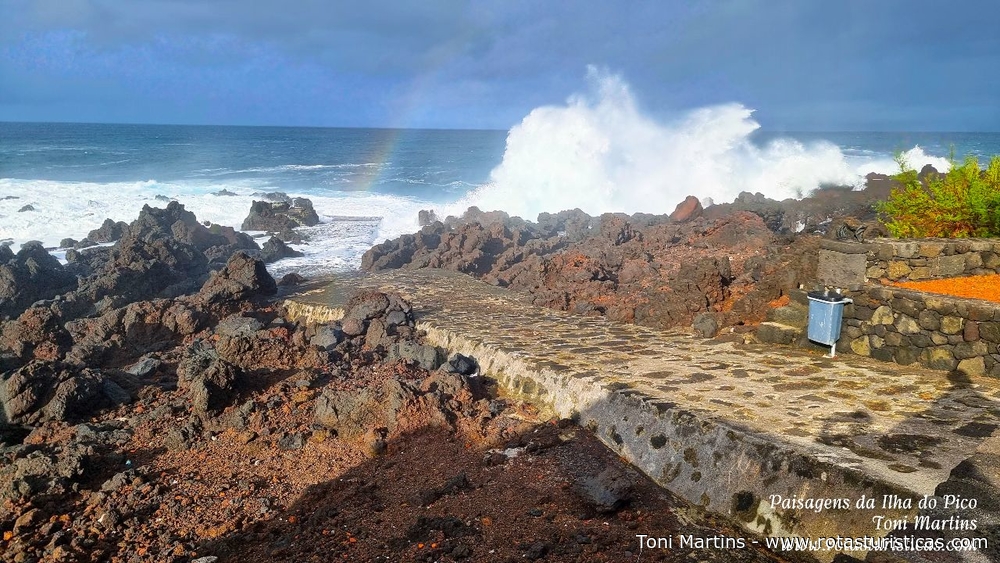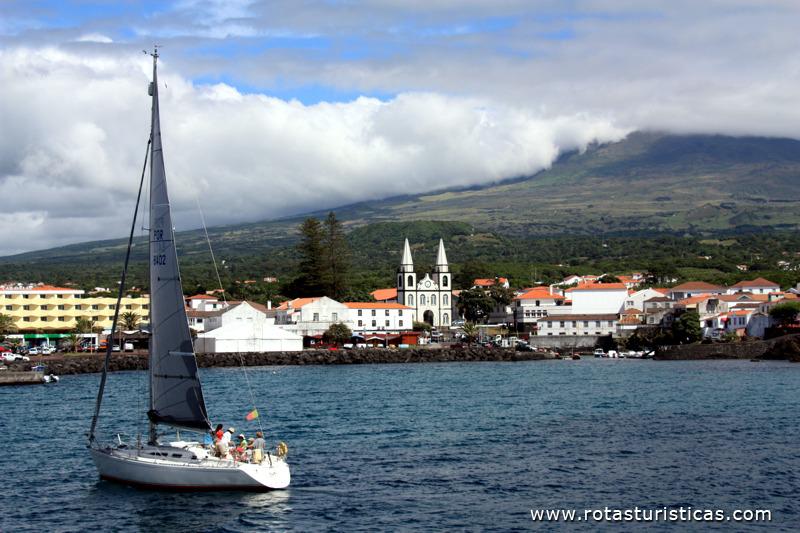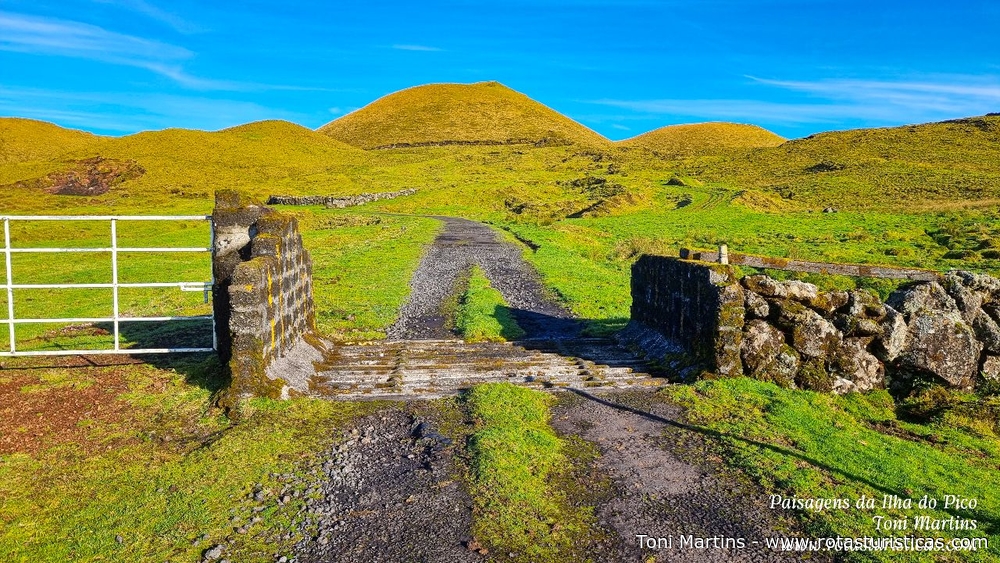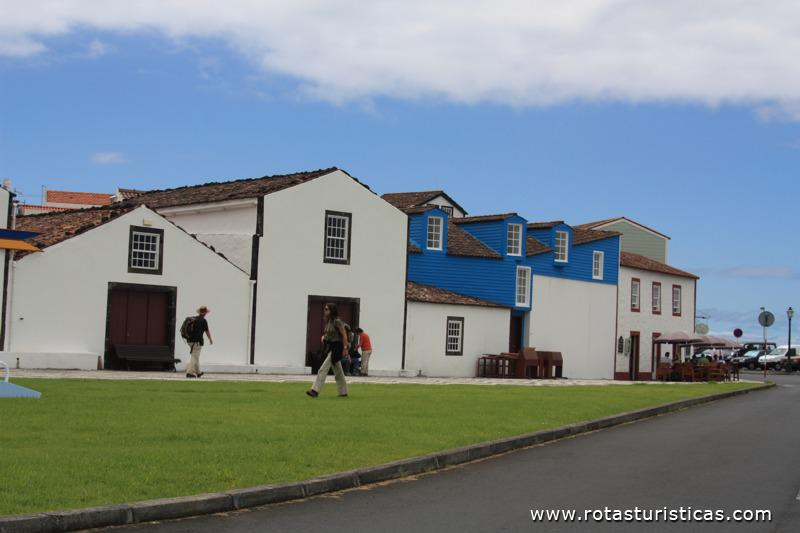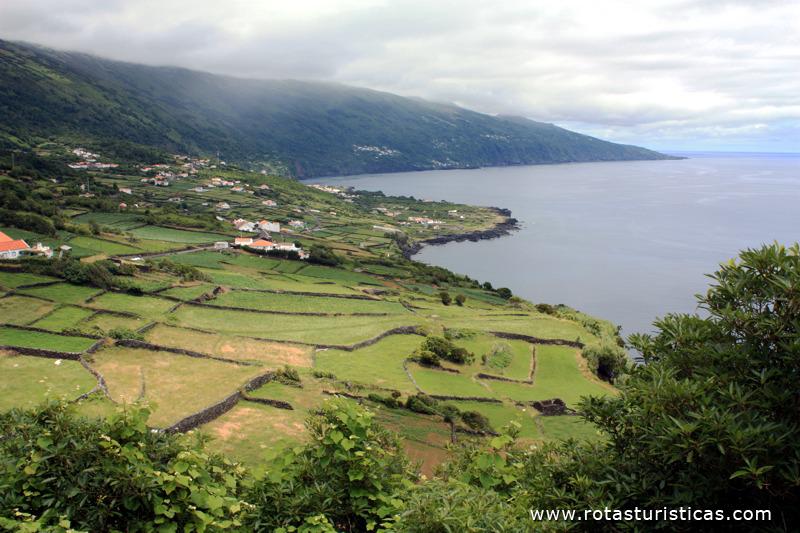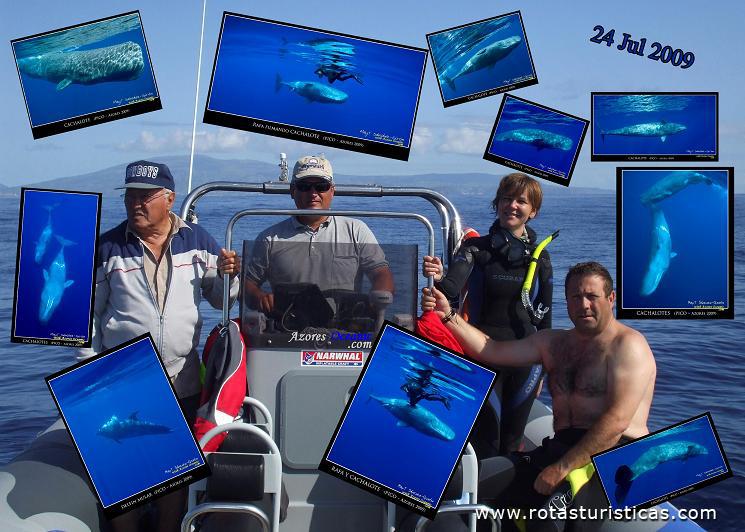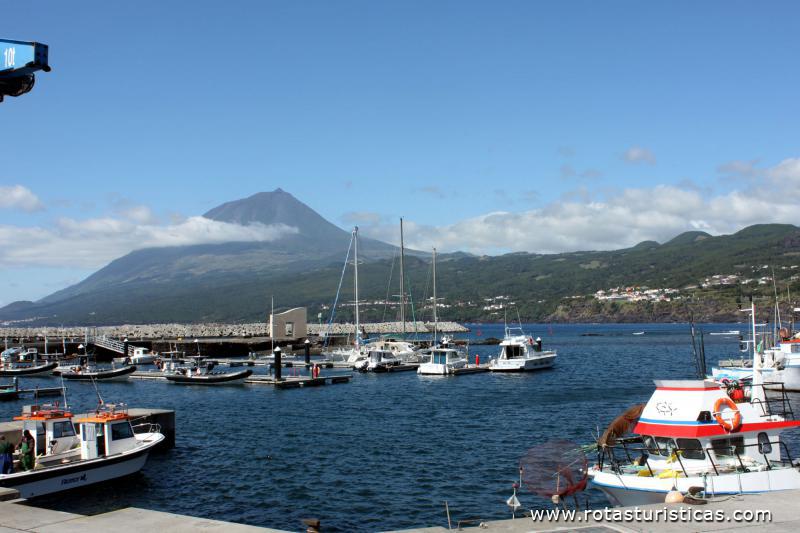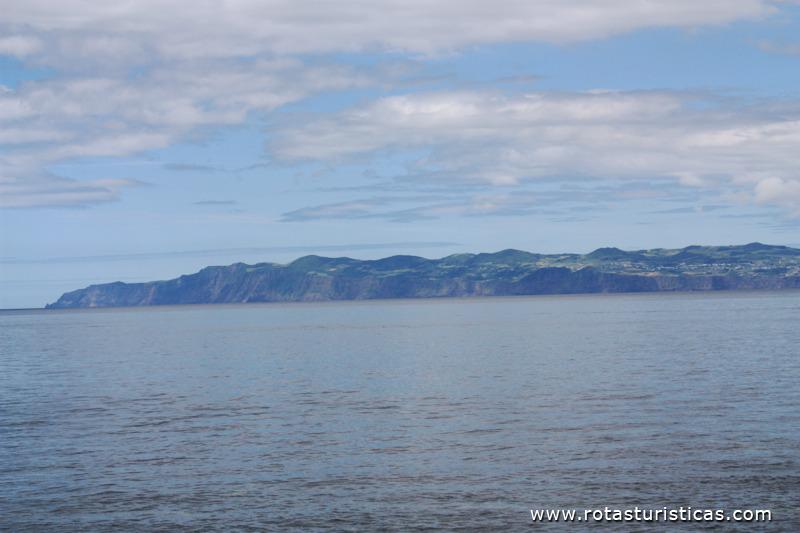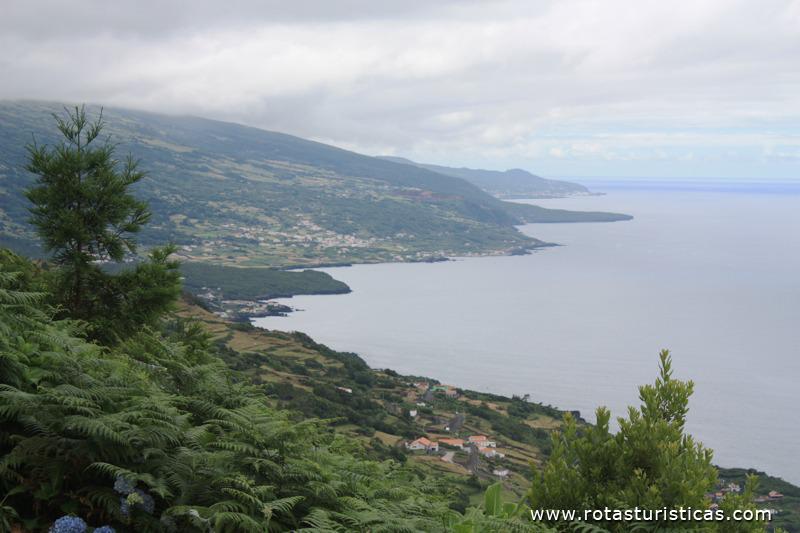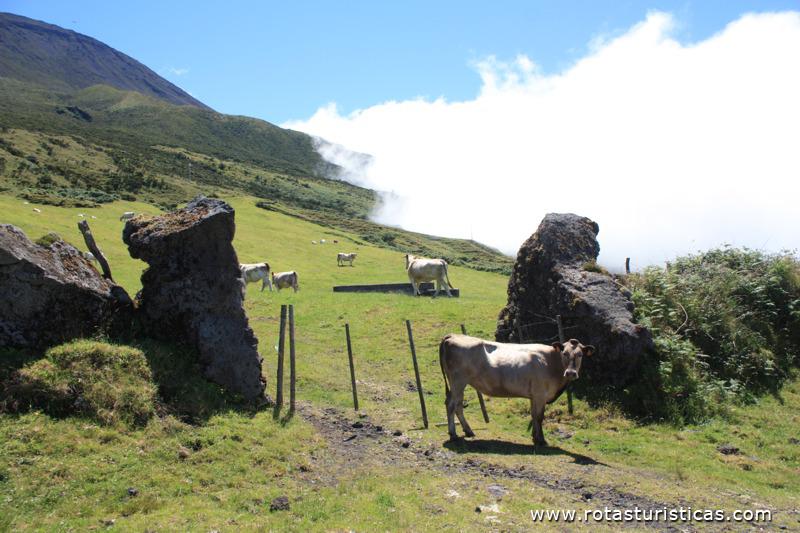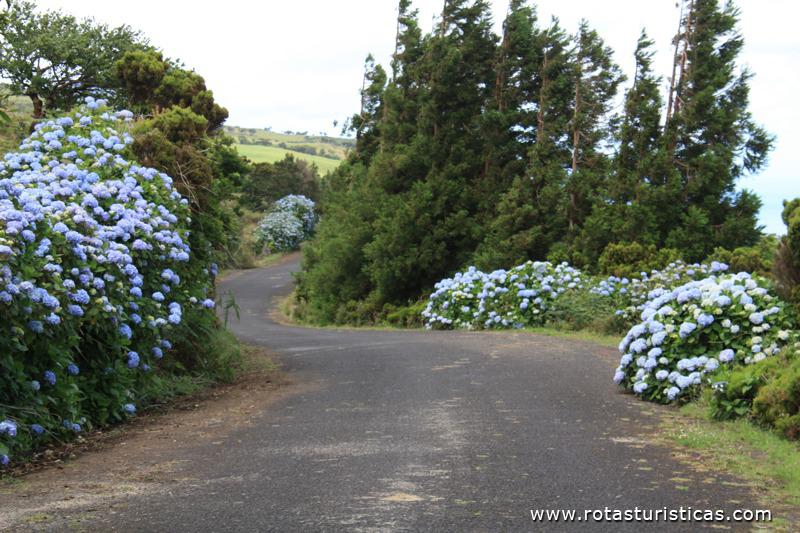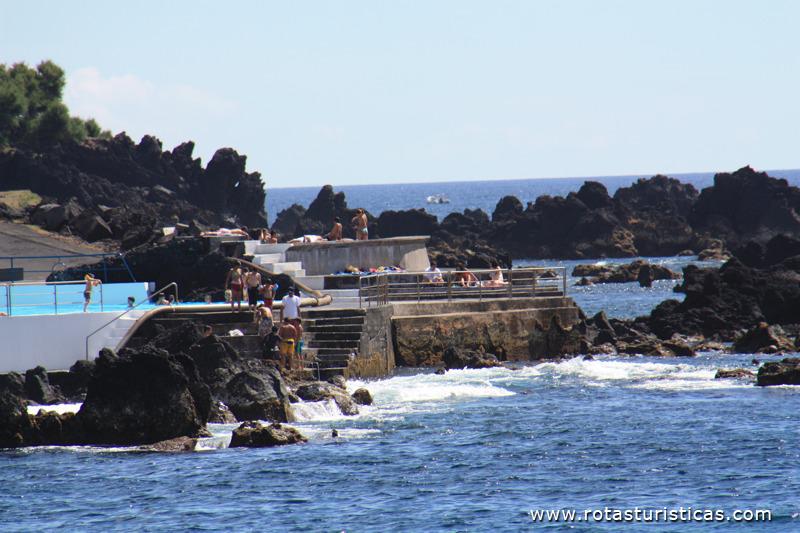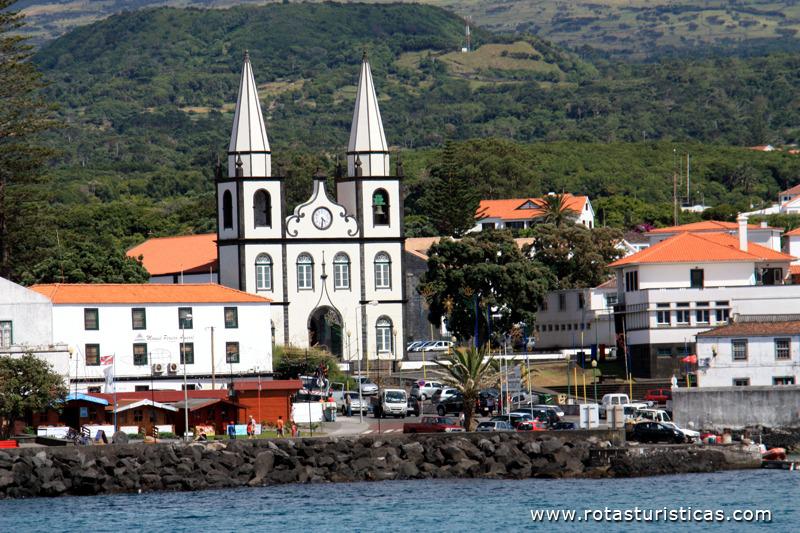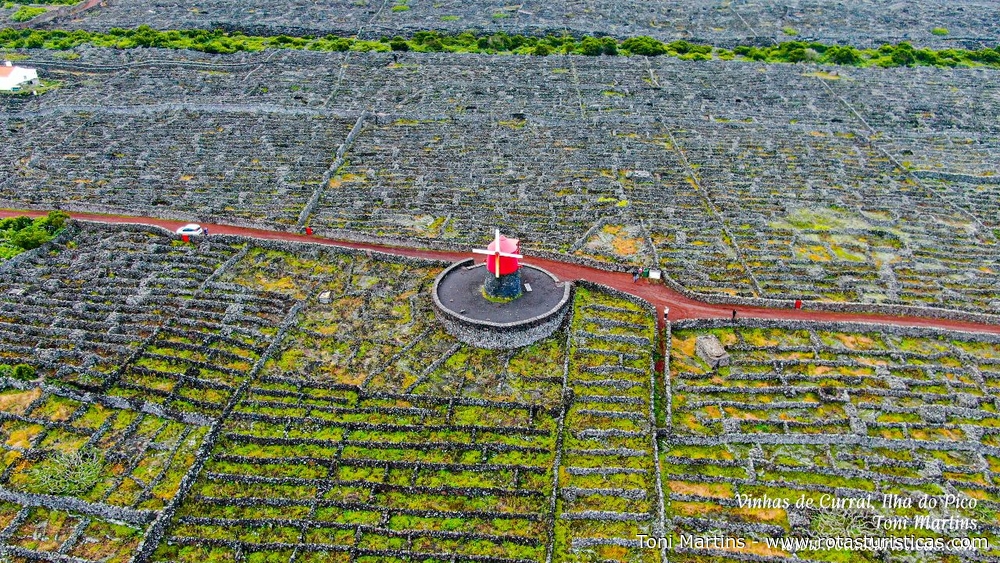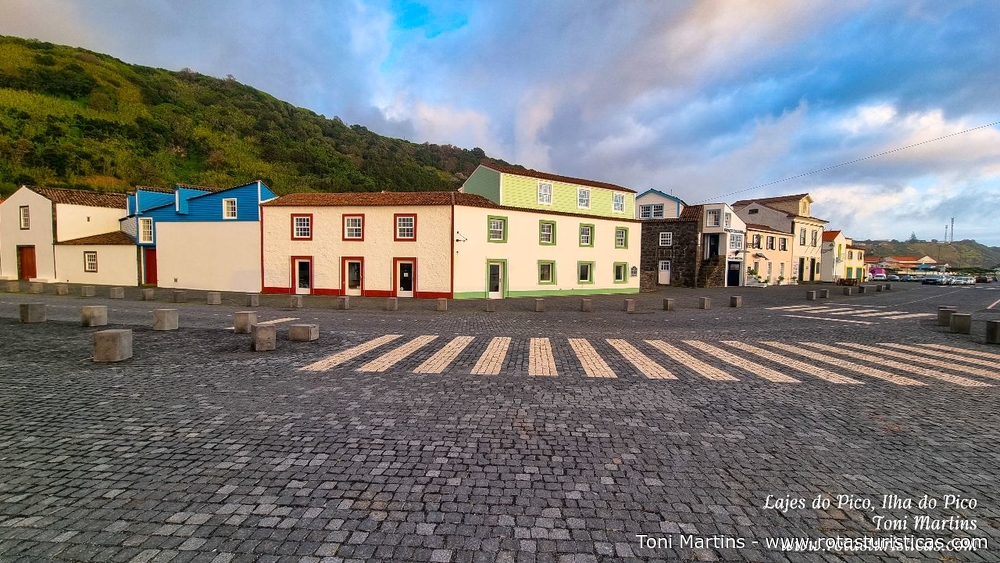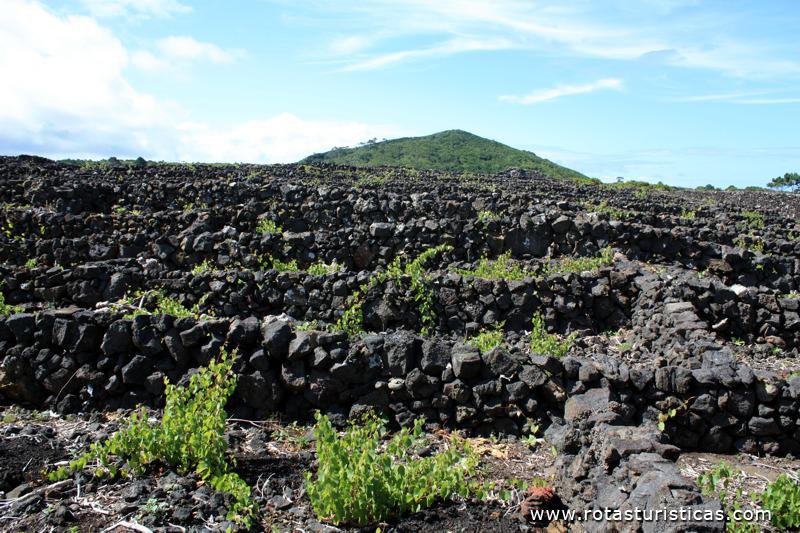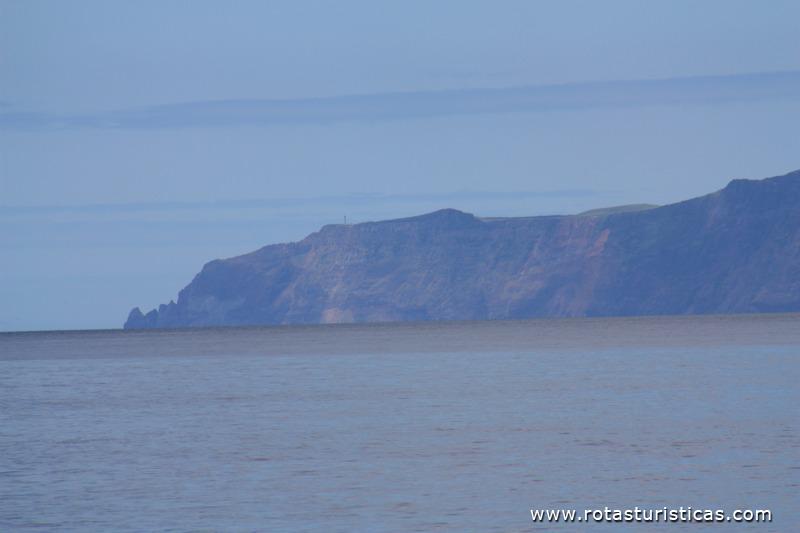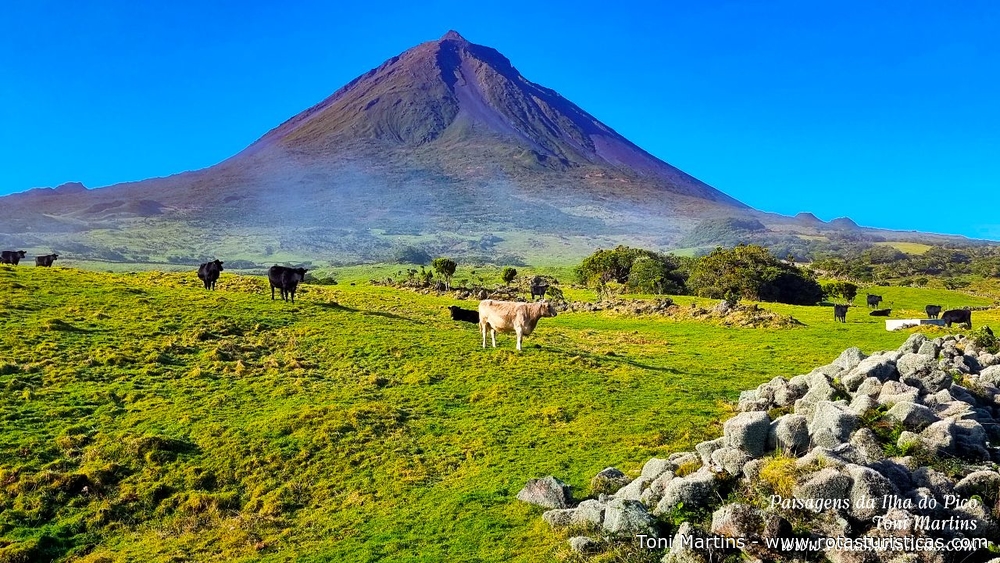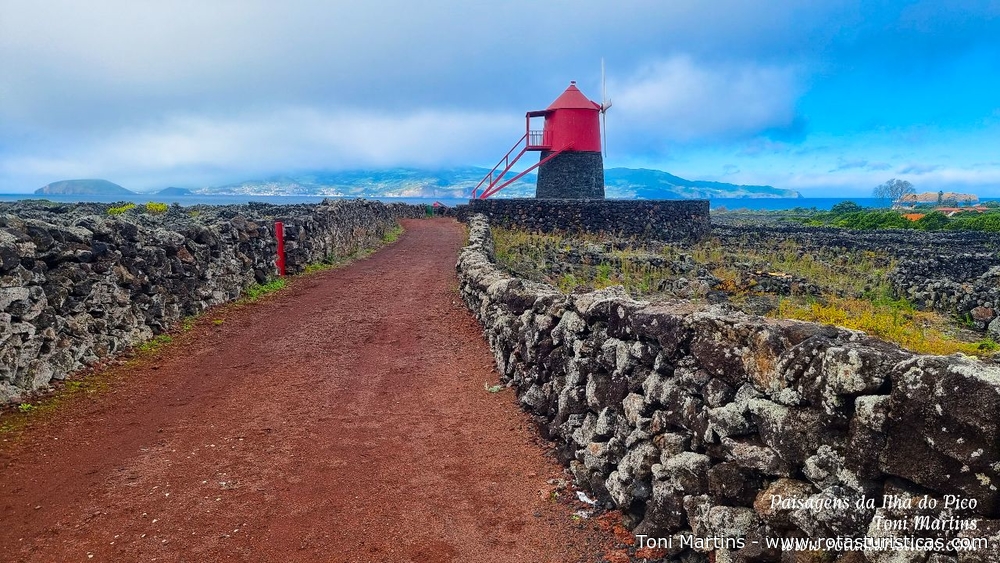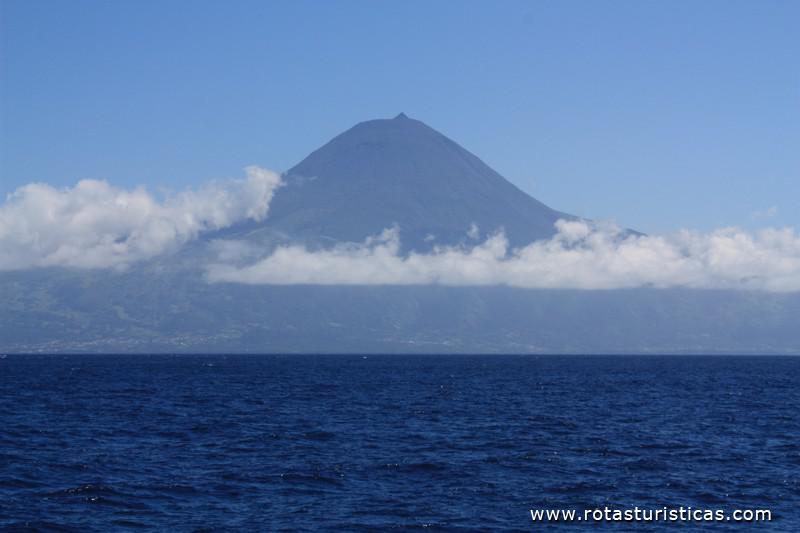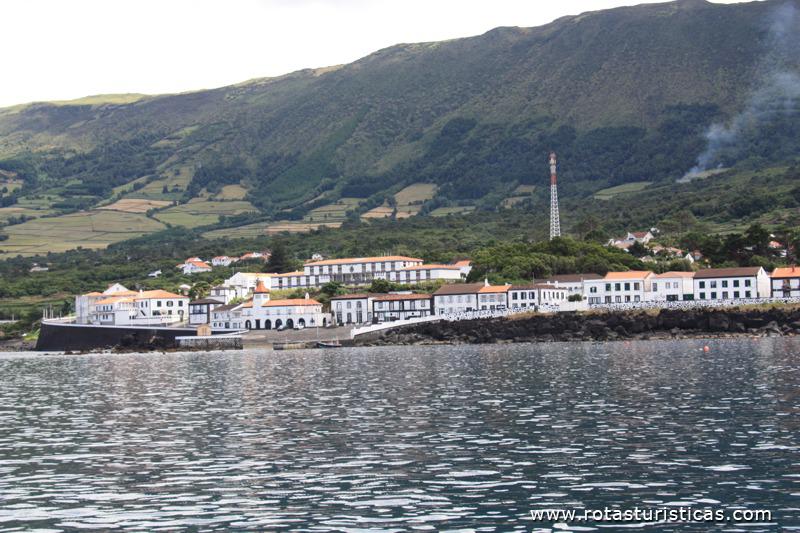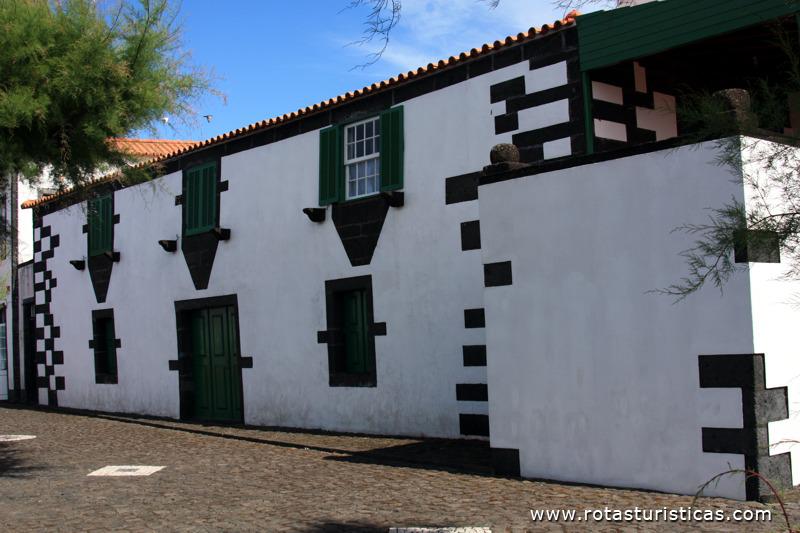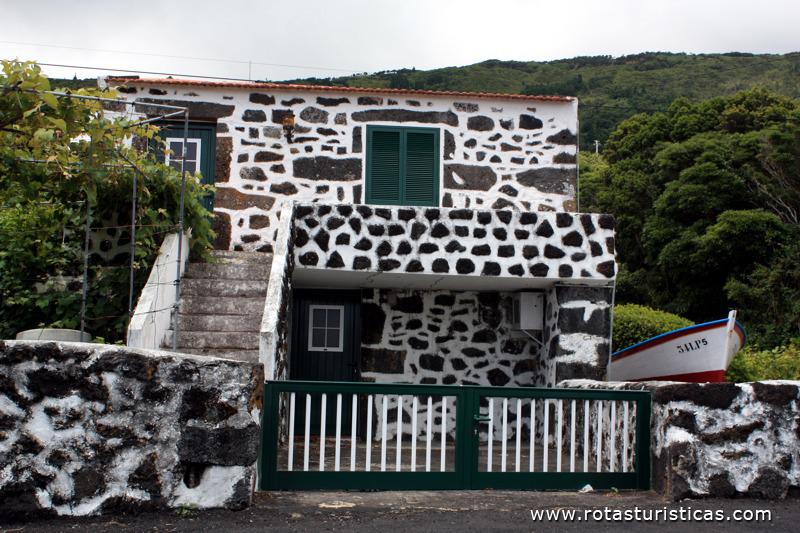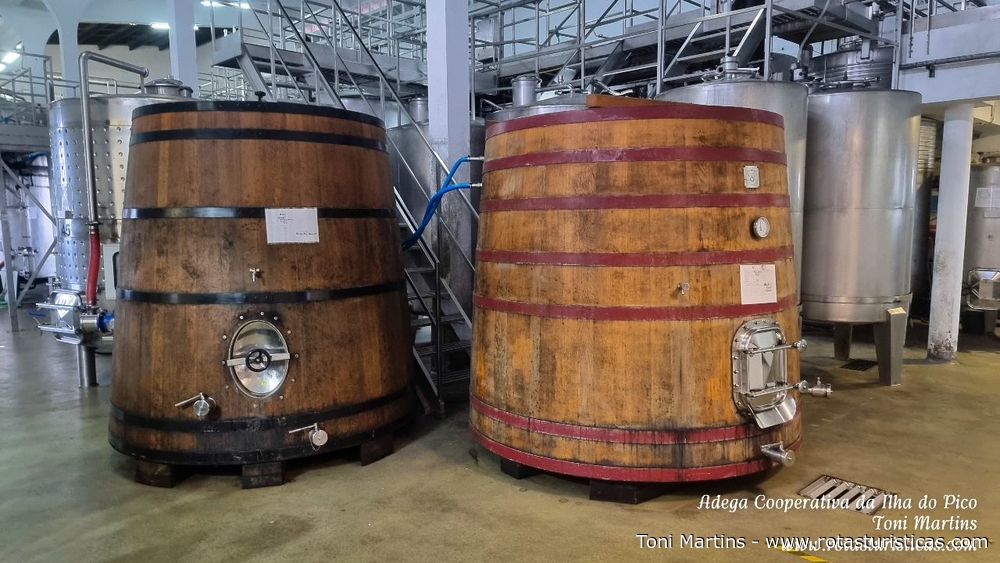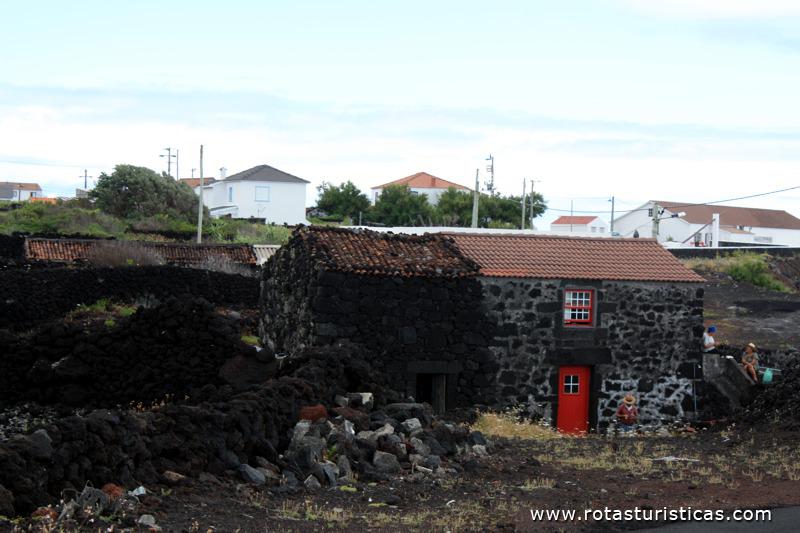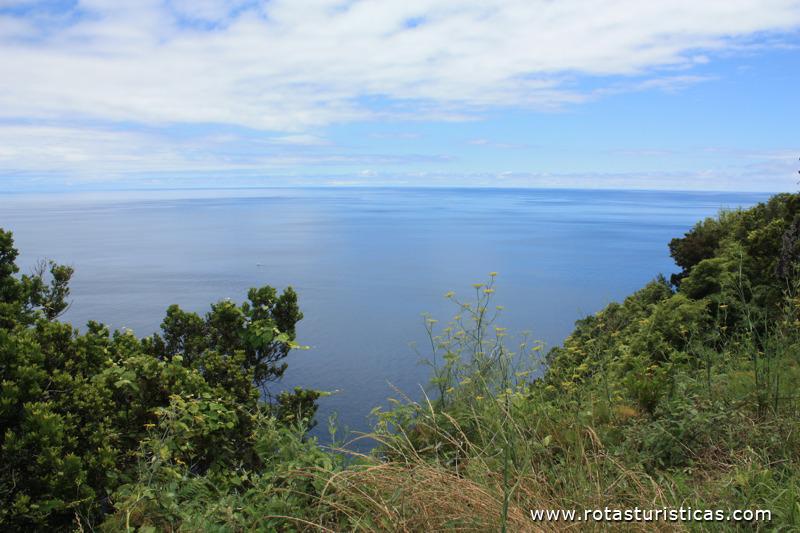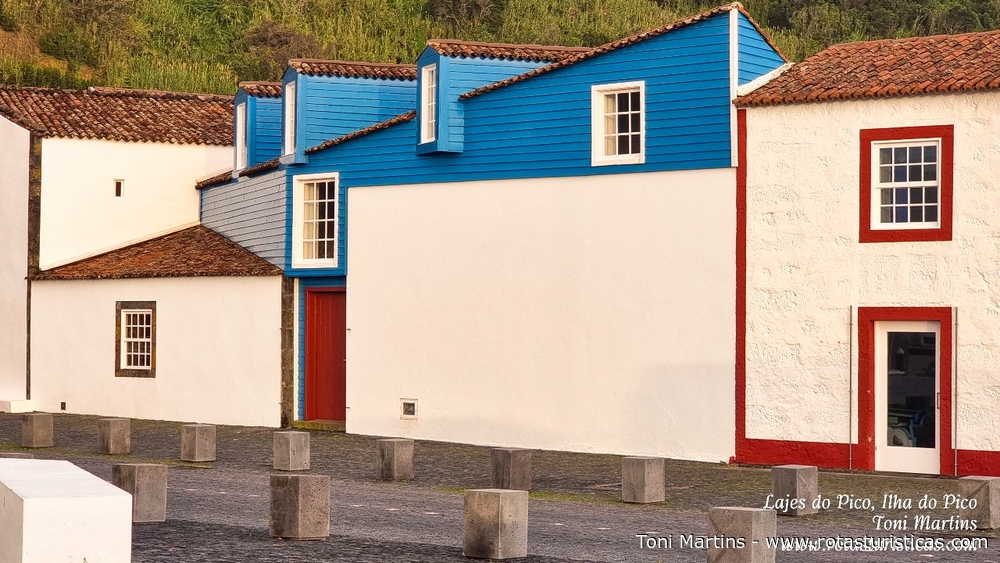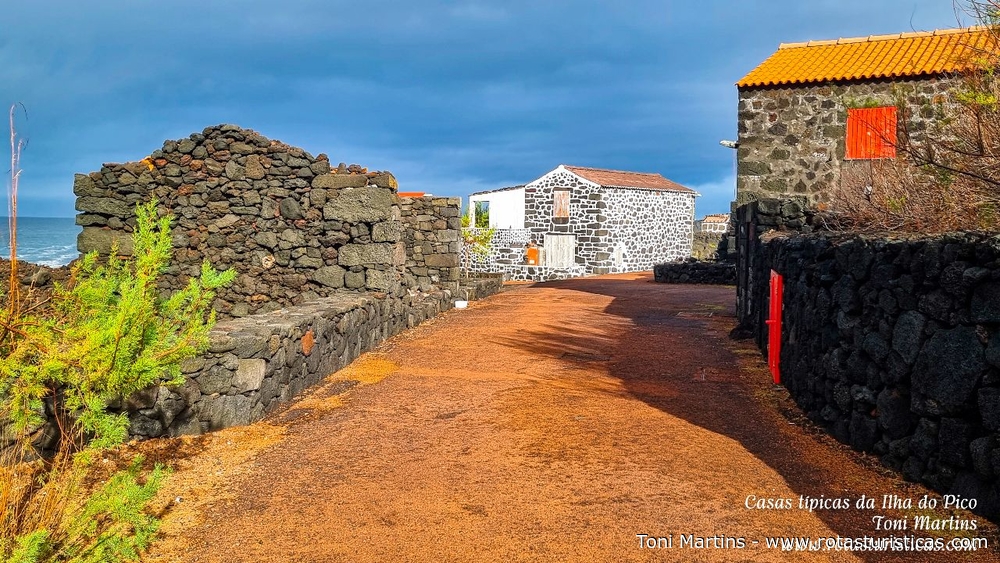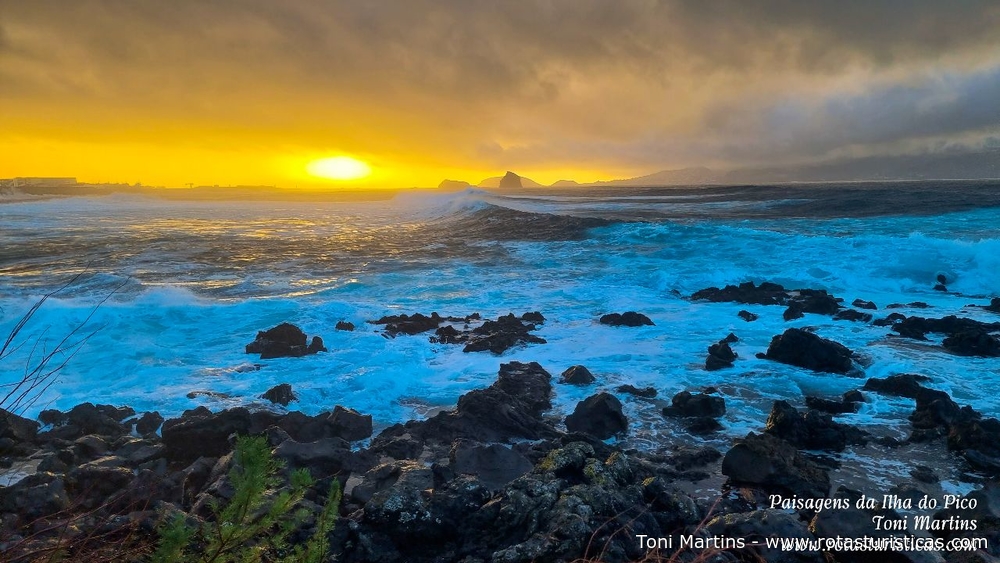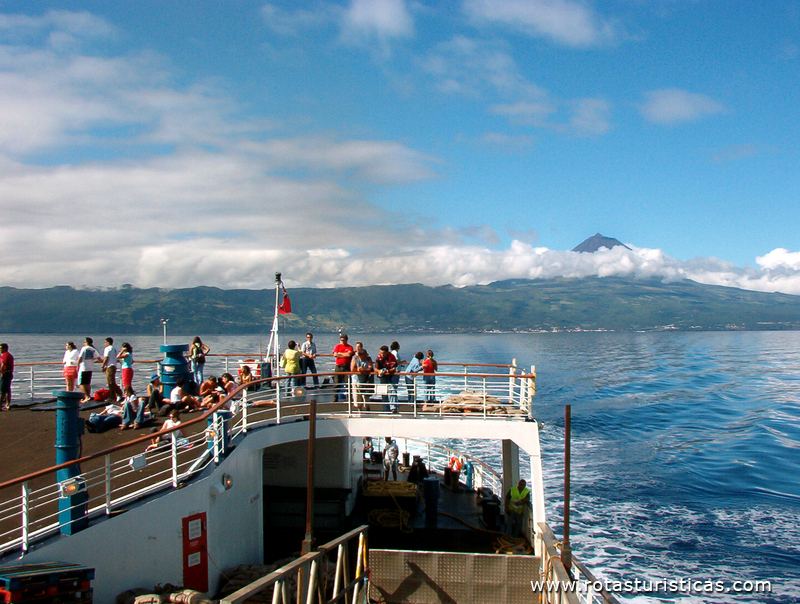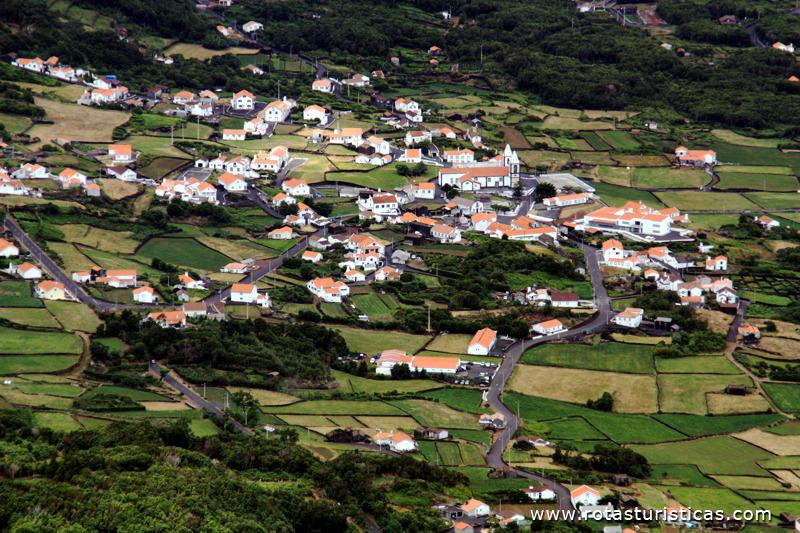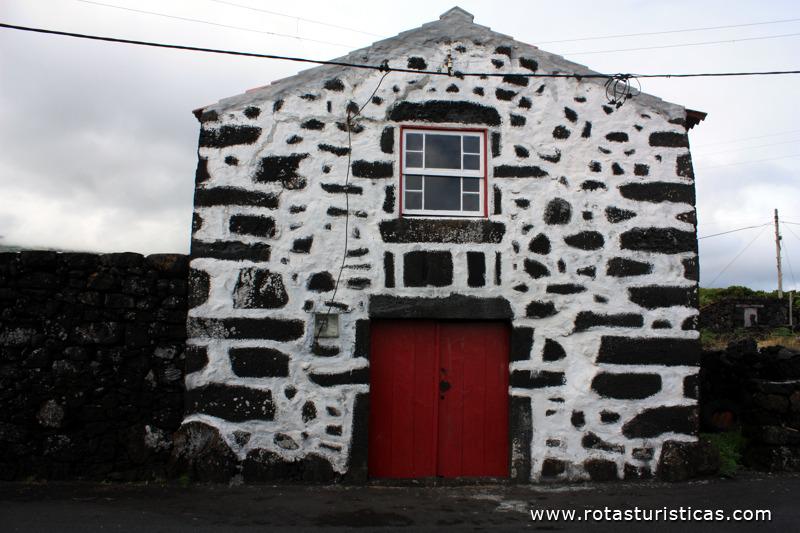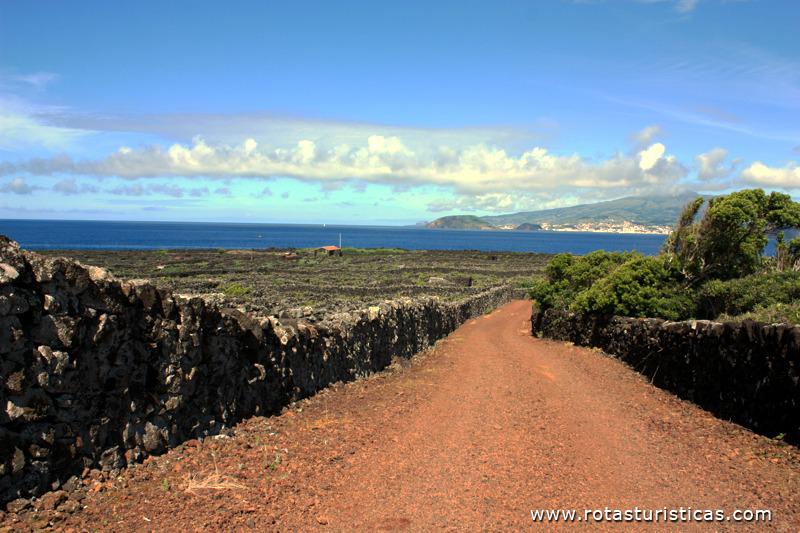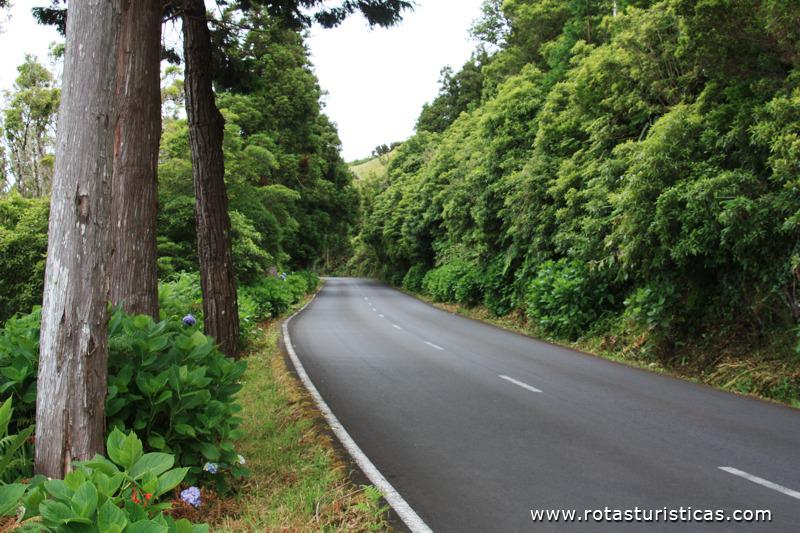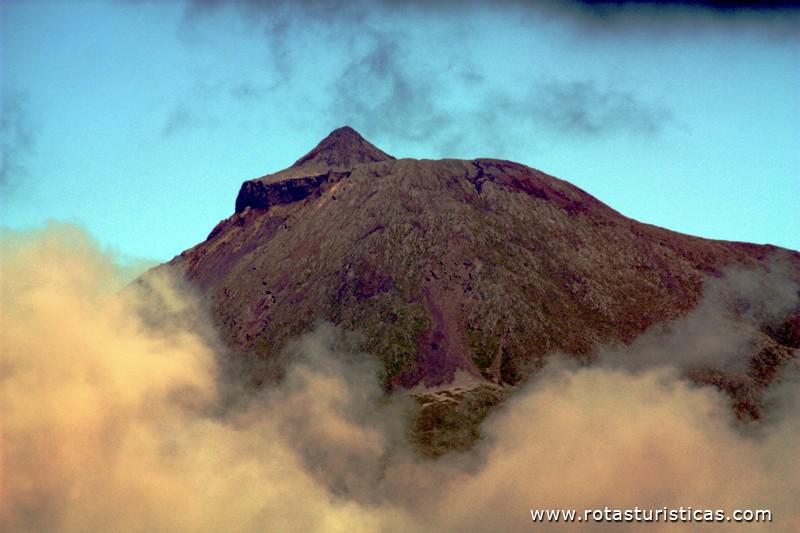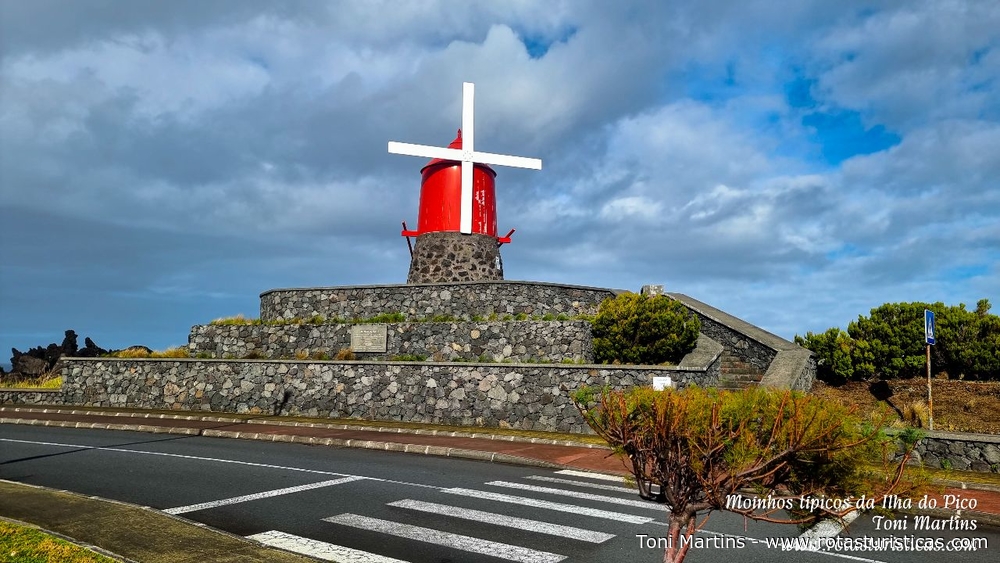Pictures of: Pico Island - Azores
Location map
Airports
Hotels and other Accommodation
What to visit
Where to Eat
World Nomads
The Travel Insurance with the largest coverage

The Travel Insurance with the largest coverage

The Island of Pico
The island of Pico, initially called São Dinis Island, is characterized by its imposing mountain. Pico is one of the most beautiful islands of the Azores, causing a sharp impression on all who visit it. It is the second largest island of the archipelago, also known as the Island-Mountain.
With a population of around 15,000, Pico was the only island of the largest on the surface that did not reach a population density. Vitorino Nemésio explained this trend in light of the economic activities developed there. With a soil suitable for agriculture and pastoralism, the island would specialize in activities related to fishing, wine and fruit.
The island is majestically located in the middle of the Central Group of the archipelago, about 8.3 km (4.5 nautical miles) from the island of Faial and approximately 20 km (11 nautical miles) from the island of S. Jorge. It is 447 km2, 42 km long and over 15 km wide.
The Pico has a mystique that was celebrated by several of its visitors. With a landscape that mixes the magmatic rock and the exotic vegetation, a scene made up of lights and shadows dominated by the gigantic mountain, an economic history that connects the vine to the sea and a dormant volcano about 300 years ago, the island is today an indisputable a pole of attraction for scientists, tourists and explorers. In 2004, UNESCO classified the Landscape of Pico Island's Vineyard Culture as a World Heritage Site.
The history of the island of Pico was built on the epic of whaling and its traditional wineries. The famous Pico wines, produced in UNESCO's world-famous corrals, and the construction of superb wooden fishing boats are symbols of this island.
Land of whalers, the island and its people were immortalized in the writing of Vitorino Nemésio as the most daring of the entire archipelago.
Whale hunting, once an important economic activity on the island, has led to the study and observation of whales, dolphins and other marine mammals in recent years, with trips being made to observe these species organized from Magdalena or Lajes.
The Pico presents some of the best places for swimming in the Azores, with the frequent appearance of sandy areas in its beautiful bays. It is also the ideal island for walking, running, birdwatching, fishing, biking and Moto 4, with caving being one of the favorite pastimes of many visitors.
It is a place where calm and peace can be found in every corner, but also offers the possibility of the visitor to experience, in a nearby parish, the livelier experience of the island and to learn the most festive elements of its culture , particularly through frequent camp.
The trips to Faial and São Jorge are made in a boat, which travels in thirty minutes the short distance between the islands.
With a population of around 15,000, Pico was the only island of the largest on the surface that did not reach a population density. Vitorino Nemésio explained this trend in light of the economic activities developed there. With a soil suitable for agriculture and pastoralism, the island would specialize in activities related to fishing, wine and fruit.
The island is majestically located in the middle of the Central Group of the archipelago, about 8.3 km (4.5 nautical miles) from the island of Faial and approximately 20 km (11 nautical miles) from the island of S. Jorge. It is 447 km2, 42 km long and over 15 km wide.
The Pico has a mystique that was celebrated by several of its visitors. With a landscape that mixes the magmatic rock and the exotic vegetation, a scene made up of lights and shadows dominated by the gigantic mountain, an economic history that connects the vine to the sea and a dormant volcano about 300 years ago, the island is today an indisputable a pole of attraction for scientists, tourists and explorers. In 2004, UNESCO classified the Landscape of Pico Island's Vineyard Culture as a World Heritage Site.
The history of the island of Pico was built on the epic of whaling and its traditional wineries. The famous Pico wines, produced in UNESCO's world-famous corrals, and the construction of superb wooden fishing boats are symbols of this island.
Land of whalers, the island and its people were immortalized in the writing of Vitorino Nemésio as the most daring of the entire archipelago.
Whale hunting, once an important economic activity on the island, has led to the study and observation of whales, dolphins and other marine mammals in recent years, with trips being made to observe these species organized from Magdalena or Lajes.
The Pico presents some of the best places for swimming in the Azores, with the frequent appearance of sandy areas in its beautiful bays. It is also the ideal island for walking, running, birdwatching, fishing, biking and Moto 4, with caving being one of the favorite pastimes of many visitors.
It is a place where calm and peace can be found in every corner, but also offers the possibility of the visitor to experience, in a nearby parish, the livelier experience of the island and to learn the most festive elements of its culture , particularly through frequent camp.
The trips to Faial and São Jorge are made in a boat, which travels in thirty minutes the short distance between the islands.
Tourism
Pico Mountain, with an altitude of 2351 meters
- invites a challenging climb;
Pico Museum, with its three poles: the Whaling Museum in Lajes, the Whaling Industry Museum in São Roque, and the Wine Museum in Magdalena are obligatory places to visit, for they portray an important era in the history of the Peak. The Wine Museum occupies the old premises of the Carmelite Convent (17th / 18th centuries), providing visits to the vineyards, wine tastings and, in September, participation in the vintage;
Wine tasting
- Inserted in the landscape protected by UNESCO, the wines can be appreciated in identified areas in the localities of Madalena, Lajido and Cabrito and, in particular, in the Wine Museum in Madalena;
Visit to the Gruta das Torres
- geological formation classified as Regional Natural Monument, is the largest lava tube known in Portugal, with an extension of 5150 meters.
Bathing areas
- some of the best in the Azores, especially those located in Prainha, Santo António, Ribeiras and Madalena;
Whale watching in Lajes and São João;
- invites a challenging climb;
Pico Museum, with its three poles: the Whaling Museum in Lajes, the Whaling Industry Museum in São Roque, and the Wine Museum in Magdalena are obligatory places to visit, for they portray an important era in the history of the Peak. The Wine Museum occupies the old premises of the Carmelite Convent (17th / 18th centuries), providing visits to the vineyards, wine tastings and, in September, participation in the vintage;
Wine tasting
- Inserted in the landscape protected by UNESCO, the wines can be appreciated in identified areas in the localities of Madalena, Lajido and Cabrito and, in particular, in the Wine Museum in Madalena;
Visit to the Gruta das Torres
- geological formation classified as Regional Natural Monument, is the largest lava tube known in Portugal, with an extension of 5150 meters.
Bathing areas
- some of the best in the Azores, especially those located in Prainha, Santo António, Ribeiras and Madalena;
Whale watching in Lajes and São João;
Gastronomy
Torresmos, black pudding, sausage with yam and meat sauce are the main dishes of meat, being the fish broth and the octopus stewed in wine, delicacies not to be missed by the lovers of the sea. For seafood lovers, lobsters, crabs, chips and santos are abundant, which in these waters and in their typical way of making them, take on a simply unique taste. Pico's fresh white cheese is a good start to a meal, which can end with the typical and delicious cheese of St. John with its yellow peel, the intense smell and soft interior made from cow's milk.
Puff pastry, rosquilas, vespers and sweet rice are the typical sweets of the island, these are directly linked to the Feasts of the Holy Spirit. They are completed by the Carnival candies, children, coscorões and dreams. On the digestive trays, the spirits of Fig and other local fruits, distilled in stills of old copper and are highly appreciated digestive drinks, are common. For those who like sweet drinks, the typical Angelica.
The Verdelho
Born in the lava soil, sheltered from the wind by walls of rough and dark stone and warmed by the rays of the sun, the grapes that produce it give it the sweetness of honey. A dry white wine is produced, with an alcoholic strength between 15 and 17º, which, after aging, becomes an excellent aperitif. In the last century, it was exported to many countries in Europe and America, and reached the table of the Russian court. The vineyards, which mark the landscape of the island, also produce a fresh, fruity, dry and light wine, which is the ideal companion of a seafood or fish dish and also the wine of smell, whose presence is mandatory at the tables on feast days .
The Pomar Island
The ground made of lava, the sun and the dry climate, make of Pico the orchard of the Azores, where the trees of apples and pears, apricots and peaches, plums and oranges flourish and produce sweets and juicy juices. But it is the fig, with an interior as red as a ruby, the true delicacy for gourmets, which best symbolizes the delicious fruit of Pico.
Puff pastry, rosquilas, vespers and sweet rice are the typical sweets of the island, these are directly linked to the Feasts of the Holy Spirit. They are completed by the Carnival candies, children, coscorões and dreams. On the digestive trays, the spirits of Fig and other local fruits, distilled in stills of old copper and are highly appreciated digestive drinks, are common. For those who like sweet drinks, the typical Angelica.
The Verdelho
Born in the lava soil, sheltered from the wind by walls of rough and dark stone and warmed by the rays of the sun, the grapes that produce it give it the sweetness of honey. A dry white wine is produced, with an alcoholic strength between 15 and 17º, which, after aging, becomes an excellent aperitif. In the last century, it was exported to many countries in Europe and America, and reached the table of the Russian court. The vineyards, which mark the landscape of the island, also produce a fresh, fruity, dry and light wine, which is the ideal companion of a seafood or fish dish and also the wine of smell, whose presence is mandatory at the tables on feast days .
The Pomar Island
The ground made of lava, the sun and the dry climate, make of Pico the orchard of the Azores, where the trees of apples and pears, apricots and peaches, plums and oranges flourish and produce sweets and juicy juices. But it is the fig, with an interior as red as a ruby, the true delicacy for gourmets, which best symbolizes the delicious fruit of Pico.
Climate
Although in a drier climate, the Pico is, like the other islands of the archipelago, influenced by the Gulf Stream. The Azores Anti-Cyclone acts as a moderating force, maintaining temperatures between 14ºC (57ºF) and 27ºC (80ºF) throughout the year.
Other tourist destinations in:
Portugal
Portugal
Other world tourist destinations
Why to book with TRAVEL CLUBE
The best prices
Our partnerships with the world´s largest operators offer research on the best market prices.
More options
At Rotas Turisticos you can book the hotel, buy the air ticket, book the transfer from the airport to the hotel and vice versa, book the local excursions, rent the car, take travel insurance and consult the places to visit and where to go.
Holiday Tips & Destinations
Hundreds of holiday destinations with all the options that allow you to easily choose the destination that best suits your dream vacation.
TRAVEL CLUBE
Links

